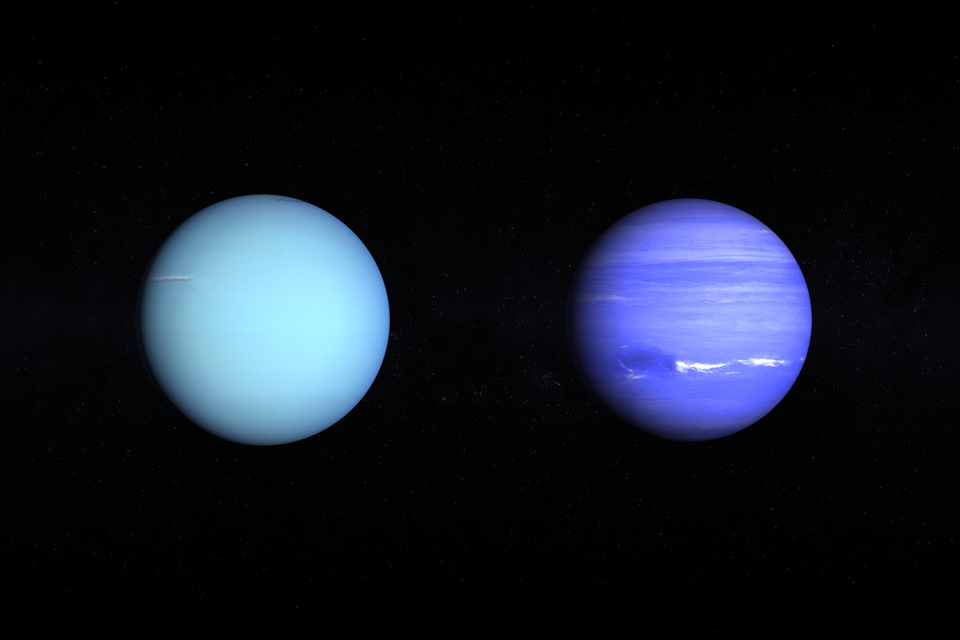For years, scientists have theorized that ‘diamond rain‘ occurs on Neptune and Uranus–two of the largest and coldest planet in the Solar System. Now, they successfully recreated the phenomenon inside a laboratory.
Based on studies, Uranus and Neptune–referred to by scientists as icy gas giant planets–both have carbon molecule-rich atmospheres. For instance, methane has been found to be abundant on both. According to researchers, the extreme atmospheric pressure of the two planets squeezes hydrogen and carbon together leading to the formation of diamond rain.
A team of scientists recreated Neptune and Uranus' #diamondrain in a lab! Click To TweetWhile studies suggest that diamond rain is likely to occur on the said planets because of the existence of carbon substances, there has been no clear evidence of its occurrence. So, to test the theory, researchers from the United States, United Kingdom, and Germany tried to recreate diamond rain inside a laboratory.
The Making of ‘Diamond Rain’
Using the SLAC National Accelerator Laboratory, the international team of researchers simulated the severe conditions of an icy giant planet. To create the ‘rain,’ scientists used a sheet of polystyrene as a substitute for the hydrocarbon found in both Uranus and Neptune.
They fired lasers at the polystyrene which rapidly heated up its surface, causing it to generate a shock wave and expand. The team was able to produce two shock waves, with the second wave observed as faster and larger than the first one.
When the shock waves caught up with each other, it caused the temperature and pressure to rise up to 5,000 K and 150 GPA respectively. The said condition was believed to be the closest to those found about 10,000 KM into the interior of the two icy giant planets.
The experiment was enough for the bonds between hydrogen and carbon within the polystyrene to break. This allowed carbon molecules to bond together and form diamonds. The researchers observed the formation of the diamonds by utilizing X-ray pulses from the powerful Linac Coherent Light Source.

“You need these intense, fast pulses of X-rays to unambiguously see the structure of these diamonds, because they are only formed in the laboratory for such a very short time,” said Siegfried Glenzer, professor of photon science at Stanford University.
In a report from The Guardian, first author of the research Dominik Kraus from the German research laboratory Helmholtz-Zentrum Dresden-Rossendorf said:
“The experimental time is very short. That we saw this very clear signature of diamonds was actually very, very surprising.”
The diamonds produced by the researchers in the laboratory were tiny, just a few nanometers in diameter. However, they claimed that the diamonds produced during diamond rain in Neptune and Uranus could be a whole lot bigger.
“Understanding planetary interiors is crucial to understand how solar systems, planets and, with that also conditions favoring life, can form out of stardust. That is true for our solar system, but also for all the other planetary systems that are now found at other stars,” Kraus further stated.
In a statement to IFL, Glenzer said:
“The key result of this paper is that we produce diamonds out of plastic. Previously what people have done is to use graphite or pure carbon. Here instead we have formed them from two species, carbon and hydrogen.”
Those icy giant planets have many constituents. We have just completed an experiment that used a different type of plastic that contained oxygen and we investigated if diamonds form as well in those conditions.”
Right now, the research not only has consequences in planetary science but on many fields of study here on Earth as well. For instance, nanodiamonds are used in several applications of medicine and engineering. A better understanding of the diamond rain and icy giant planets may prove beneficial in improving our current technology and energy production.



















Comments (0)
Most Recent